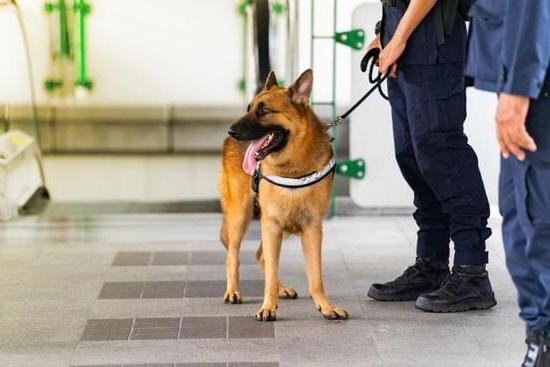Are you wondering, “How can I crate train my dog?” Crate training is a valuable tool that can benefit both you and your furry friend in various ways. By providing a safe and secure space for your dog, crate training can help with potty training, provide a sense of security, and assist in preventing destructive behavior when you’re not around. Understanding the benefits of crate training is essential before diving into the process.
When it comes to crate training, choosing the right crate for your dog is crucial. Consider factors such as size, material, and features to ensure your pup feels comfortable and secure in their new space. Setting up the perfect environment for crate training involves selecting the right location, providing cozy bedding, and adding toys or treats to make the crate a positive place for your dog to be.
Introducing your dog to the crate will require patience, consistency, and positive reinforcement. Gradual acclimation is key to ensuring that your dog sees the crate as a safe haven rather than a place of confinement. By following these steps and establishing a routine that includes feeding, exercise, and potty breaks within the crate, you’ll set your four-legged friend up for success in their crate training journey.
Choosing the Right Crate for Your Dog
When it comes to crate training your dog, choosing the right crate is essential for their comfort and safety. The size of the crate plays a crucial role in ensuring that your dog has enough space to move around, stand up, and lie down comfortably. A crate that is too small can make your dog feel cramped and anxious, while a crate that is too big may not provide the cozy den-like feeling that dogs instinctively seek.
Size
When selecting a crate size for your dog, consider their current size as well as their potential growth if they are still a puppy. Your dog should be able to turn around easily and stretch out while lying down without feeling constrained. It’s recommended to choose a crate that allows for some extra room but not excessively large.
Material
Crates come in various materials such as wire, plastic, fabric, or wood. Each material has its own advantages and drawbacks. Wire crates are commonly used due to their durability and easy cleaning features. Plastic crates offer more privacy and can create a den-like environment for your dog. Fabric crates are lightweight and portable, ideal for travel purposes. Consider your dog’s preferences and behavior when selecting the material of the crate.
Features
There are different types of crates available with various features such as divider panels to adjust the size as your puppy grows, double doors for easy access and cleaning, or collapsible designs for convenient storage when not in use. Choose a crate with features that will best suit your lifestyle and your dog’s needs. Ultimately, selecting the right crate will set the foundation for successful crate training and ensure a positive experience for your furry friend.
Setting Up the Perfect Crate Training Environment
When it comes to crate training your dog, setting up the perfect environment plays a crucial role in the success of the training process. The location of the crate, the type of bedding you use, and providing appropriate toys are all key factors to consider.
Choosing the Right Location
Selecting the right location for your dog’s crate is important for their comfort and well-being. Choose a quiet area in your home where your dog can still feel like they are part of the family. Avoid placing the crate in high traffic areas or near loud noises that could cause stress or anxiety for your pet.
Selecting Suitable Bedding
The type of bedding you choose for your dog’s crate can make a big difference in their comfort level. Opt for soft, washable bedding that provides cushioning and warmth. Avoid using materials that may be easily chewed or ingested by your dog to prevent any accidents or health issues.
Providing Appropriate Toys
Toys can play a crucial role in keeping your dog entertained and engaged while in their crate. Choose toys that are safe, durable, and interactive to prevent boredom and destructive behavior. Rotate different toys regularly to keep things interesting for your furry friend.
By carefully selecting the location, bedding, and toys for your dog’s crate, you can create a comfortable and inviting space that will help make the crate training process more successful. Remember to always associate positive experiences with the crate to ensure that your dog views it as a place of security and comfort.
Introducing Your Dog to the Crate
Start by placing treats or their favorite toys inside the crate to encourage them to explore. Leave the door open initially so that they can come and go as they please. You can also feed them their meals near the crate or throw treats inside for them to fetch. The idea is to make the crate a place where good things happen so that your dog willingly enters it without any fear or hesitation.
Gradual acclimation is key when introducing your dog to the crate. Avoid forcing them inside or closing the door abruptly, as this can create anxiety and resistance. Instead, allow your dog to get used to being inside the crate for short periods of time with the door closed.
Start with just a few minutes and gradually increase the duration as your dog becomes more comfortable. Remember, every dog is different, so be patient and tailor your approach based on their individual needs and personality traits. By using positive reinforcement and taking it slow, you can successfully introduce your dog to their new crate in a way that fosters trust and confidence.
Establishing a Crate Training Routine
Establishing a routine for your dog’s crate training is crucial for their success and overall well-being. By incorporating feeding, exercise, and potty breaks into the crate training schedule, you can help your furry friend feel comfortable and settled in their new environment. Here are some tips on how to create a successful crate training routine:
- Feeding Schedule: One of the first steps in crate training is to establish a feeding schedule for your dog. By feeding your dog in or near the crate, you can help create positive associations with the space. Make sure to provide meals at consistent times each day to help regulate your dog’s bathroom breaks.
- Exercise Routine: Regular exercise is essential for your dog’s physical and mental well-being. Before placing your dog in the crate, make sure they have had an opportunity to burn off some energy through walks or playtime. A tired dog is more likely to relax and rest quietly in their crate.
- Potty Breaks: It’s important to let your dog out for potty breaks at regular intervals throughout the day. When crate training, be mindful of your dog’s age and bladder control – younger puppies may need more frequent potty breaks. Take them outside immediately after they are let out of the crate to reinforce good bathroom habits.
By incorporating these elements into your dog’s crate training routine, you can help them adjust smoothly to their new living arrangement. Consistency is key when it comes to establishing a routine, so make sure to stick to a set schedule for feeding, exercise, and potty breaks. With time and patience, your pup will learn that the crate is a safe and comfortable space where they can relax and unwind.
Remember that every dog is different, so it’s essential to tailor the routine to fit your pet’s individual needs. Observe how they respond to the schedule and make adjustments as needed. With dedication and positive reinforcement techniques, you’ll be on your way to successful crate training in no time.
Handling Common Crate Training Challenges
Crate training your dog can be an effective way to provide them with a safe and comfortable space while also helping to manage their behavior. However, it is common for pet owners to face challenges during the crate training process. Whining, barking, and anxiety are some of the most common issues that may arise when introducing your dog to their crate. Here are some tips on how to handle these challenges:
- Whining: Dogs may whine when first being introduced to the crate because they are not used to being confined or separated from their owner. To address this behavior, start by making the crate a positive and inviting space for your dog. Use treats, toys, and praise to create a positive association with the crate. Additionally, gradually increase the time your dog spends in the crate so they can get used to being alone.
- Barking: If your dog barks excessively when in the crate, it is important not to reward this behavior by letting them out right away. Instead, wait for a moment of silence before opening the crate door. You can also try covering the crate with a blanket to create a den-like environment that may help reduce barking.
- Anxiety: Some dogs may experience anxiety when in their crate, especially if they have negative associations with confinement or separation. To help alleviate their anxiety, make sure they have plenty of exercise before crating them and provide calming activities such as a stuffed Kong toy or soothing music. It is essential to remain patient and consistent in addressing your dog’s anxiety during crate training.
By addressing whining, barking, and anxiety during crate training with patience and positive reinforcement techniques, you can help your dog become more comfortable and relaxed in their crate over time. Remember that each dog is different, so it may take some trial and error to find what works best for your furry friend. With consistency and dedication, you can successfully overcome common challenges and create a peaceful environment for your dog in their crate.
Using Crate Training for Behavior Management
Crate training for behavior management can be a powerful tool when addressing separation anxiety and destructive behavior in dogs. Many dog owners face challenges when their pets display anxious behaviors or engage in destructive activities while left alone. Successfully using the crate as a positive space can help alleviate these issues and provide a sense of security for your furry friend.
One of the key aspects of using crate training to manage behavior is to associate the crate with positive experiences. This means making the crate a comfortable and inviting space for your dog. By incorporating treats, toys, and soft bedding into the crate, you can create a positive association with being inside it. Additionally, using verbal praise when your dog enters the crate voluntarily can reinforce this positive connection.
When dealing with separation anxiety, gradual desensitization is crucial. Start by leaving your dog in the crate for short periods while you are at home and gradually increase the time as they become more comfortable.
It’s essential to avoid making a big deal out of coming and going to prevent heightening your dog’s anxiety levels. Providing mental stimulation through interactive toys or puzzle feeders in the crate can also help distract your dog and prevent destructive behavior due to boredom.
| Benefit | Tip |
|---|---|
| Positive Association | Use treats, toys, and verbal praise to create a positive connection with the crate. |
| Gradual Desensitization | Start with short periods in the crate while at home and slowly increase alone time to address separation anxiety. |
| Mental Stimulation | Provide interactive toys or puzzle feeders in the crate to prevent destructive behavior out of boredom. |
By following these techniques and staying patient throughout the process, you can effectively use crate training to manage behavior issues like separation anxiety and destructive tendencies in your dog. Consistency, positive reinforcement, and creating a safe space for your pet will contribute to long-term success in improving their behaviors within the context of crating. Remember that each dog is unique, so it may take some trial and error to find what works best for your furry companion.
Gradual Transition to Leaving Your Dog Alone in the Crate
As your dog becomes more accustomed to being in the crate, it’s important to gradually transition to leaving them alone for short periods. This step is crucial in building their independence and confidence while in the crate. Start by leaving your dog in the crate for just a few minutes at a time, while you stay nearby. This will help them get used to being alone without feeling anxious or distressed.
Over time, gradually increase the duration of time that your dog is left alone in the crate. Make sure to provide them with a comfortable environment, such as their favorite toys or a cozy blanket, to help them feel secure. You can also leave them with a treat-filled puzzle toy to keep them occupied while you are away. By taking this gradual approach, you can help your dog feel more at ease when left alone in the crate.
Remember to always make coming back to the crate a positive experience for your dog by praising and rewarding them for good behavior. This will reinforce the idea that being in the crate is a safe and happy place for them. With patience and consistency, you can help your dog build independence and confidence in their crate training routine.
| Benefit | Tips |
|---|---|
| Building Independence | Start with short periods of alone time and gradually increase |
| Confidence-Building | Provide comfort items like toys or blankets for security |
| Positive Reinforcement | Praise and reward good behavior when returning to the crate |
Maintenance and Continued Success
In conclusion, crate training is a valuable tool for dog owners seeking to provide structure, security, and comfort for their pets. By understanding the benefits of crate training and following a systematic approach, you can successfully introduce your dog to their crate and establish positive associations with this space.
One key aspect of long-term success in crate training is consistency. Maintaining a routine that includes feeding, exercise, and potty breaks will help your dog learn to associate the crate with positive experiences and reduce the risk of accidents or anxiety-related behaviors. Additionally, monitoring your dog’s progress and making adjustments as needed will ensure that they continue to feel safe and comfortable in their crate.
As you work towards building your dog’s independence and confidence in the crate, remember to address any challenges that may arise with patience and positive reinforcement. Understanding your dog’s individual needs and behaviors will help you tailor the crate training process to suit them best. With dedication, consistency, and a thoughtful approach, you can create a harmonious environment where your dog feels secure and content in their crate.
How can I crate train my dog? By following these tips for long-term success and monitoring your dog’s progress regularly, you can achieve successful crate training outcomes for both you and your furry companion.
Frequently Asked Questions
How Long Does It Take to Crate Train a Dog?
Crate training duration varies depending on the dog’s age, temperament, and past experiences. Some dogs may take just a few days to adjust, while others may need several weeks. Consistency and positive reinforcement are key to successful crate training.
What Age Is Too Late to Crate Train a Dog?
There isn’t a specific age that is too late to crate train a dog, as older dogs can still benefit from crate training if done correctly. However, it may take longer for an older dog to adjust compared to a young puppy. The key is to be patient and consistent.
How Do I Get My Puppy to Stop Whining in His Crate?
To help your puppy stop whining in his crate, it’s important to first ensure that all his needs are met – he should have been fed, exercised, and taken out for bathroom breaks before being crated. Additionally, make sure the crate is cozy and comfortable for him with some familiar items inside like a blanket or toy.
Gradually increase the time he spends in the crate while rewarding calm behavior with treats or praise. Patience is crucial as it may take time for your puppy to get used to being crated without whining.

Welcome to the blog! I am a professional dog trainer and have been working with dogs for many years. In this blog, I will be discussing various topics related to dog training, including tips, tricks, and advice. I hope you find this information helpful and informative. Thanks for reading!





